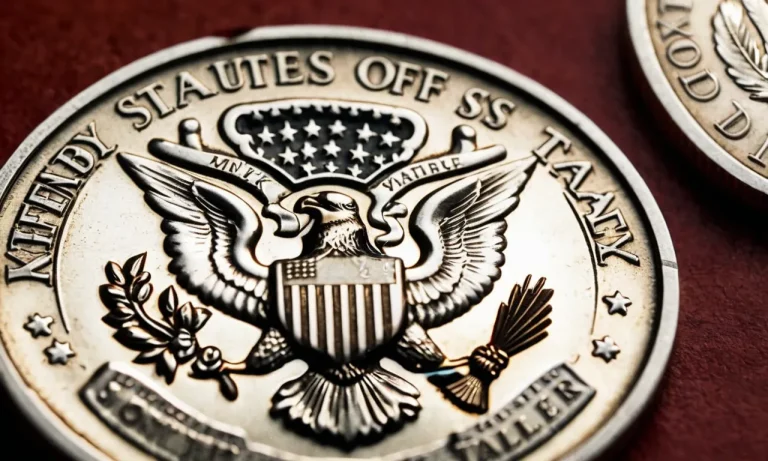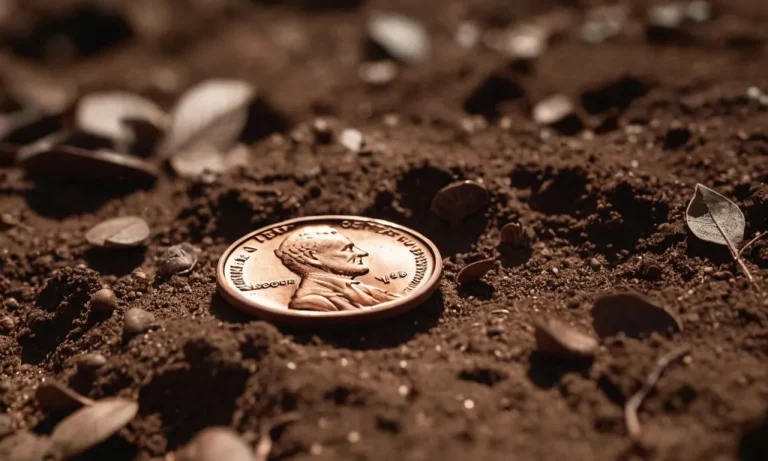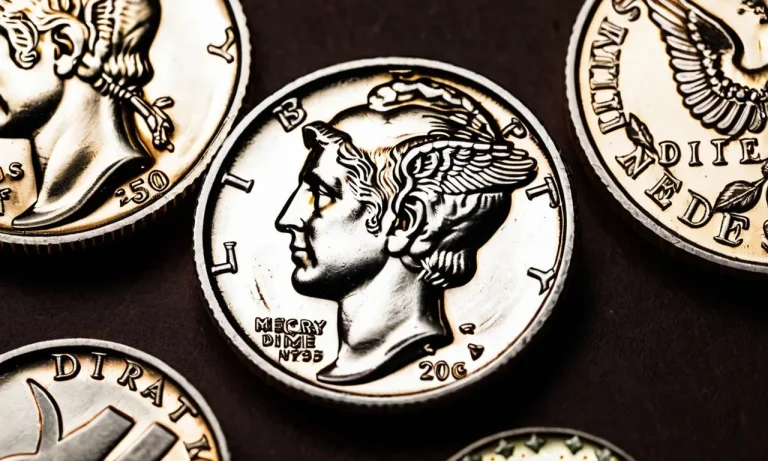Is a gold 100-dollar bill real or fake? The allure of finding a rare and valuable gold $100 bill brings thrills to collectors and non-collectors alike. But how can you tell if that flashy gold bill in your possession is the real deal or just a convincing counterfeit?
We’ll give you a quick answer here: genuine gold certificates are no longer produced by the U.S. Treasury, so any gold $100 bill today would be a fake. However, for a more nuanced understanding of these collectibles, read on.
In this comprehensive guide, we’ll cover everything you need to know about authentic and counterfeit gold certificates. We’ll explore the history of these bills, how to identify key features, their collectability and value, and where fakes originate.
Background on Real U.S. Gold Certificates
Before we dive into the question of whether a Gold $100 bill is real or fake, let’s first understand the background of real U.S. gold certificates. These certificates were issued by the U.S. Treasury as a form of paper currency backed by gold.
When Gold Certificates Were Issued
Gold certificates were first issued in the late 19th century, specifically in 1863, during the Civil War. The purpose was to provide a convenient and secure way for people to hold and transfer large amounts of gold without the need for physical coins or bullion.
These certificates were primarily used by banks and financial institutions, but they were also available to the general public. They were considered legal tender and could be used for transactions just like any other form of currency.
What Gave Them Their Value
The value of gold certificates was directly linked to the amount of gold held by the U.S. Treasury. Each certificate represented a specific amount of gold, typically in denominations of $10, $20, $50, or $100. This meant that the certificate could be redeemed for its equivalent value in gold.
The gold backing gave these certificates inherent value and made them a reliable and trusted form of currency. People could have confidence in the fact that their money was backed by a tangible asset.
Key Design Elements
Real U.S. gold certificates featured several key design elements that made them easily recognizable. They typically had a golden hue, hence the name “gold certificate,” and were printed on high-quality paper with intricate designs.
The certificates also included the signatures of top Treasury officials to further validate their authenticity.
The front of the certificate usually displayed a portrait of a prominent figure from U.S. history, such as George Washington or Abraham Lincoln. The back often depicted scenes related to American values or symbols, such as the bald eagle or the American flag.
When They Were Discontinued
The issuance of gold certificates was discontinued in 1933 under President Franklin D. Roosevelt’s Executive Order 6102. This order required U.S. citizens to turn in their gold coins, bullion, and certificates to the government to stabilize the economy during the Great Depression.
While gold certificates are no longer issued, they are still considered legal tender and can be redeemed for their face value at the U.S. Treasury or certain authorized banks. However, their value as collectibles often exceeds their face value due to their historical significance.
If you’re curious about the value of a Gold $100 bill, it’s important to do thorough research and consult with experts in numismatics (the study of coins and currency) to determine its authenticity and potential worth.
For more information on U.S. gold certificates, you can visit the U.S. Bureau of Engraving and Printing website.
How to Spot Fake Gold $100 Bills
Missing Security Features
One of the key indicators of a fake gold $100 bill is the absence of security features. Genuine bills have numerous security features that are difficult to replicate, such as holograms, watermarks, and color-shifting ink.
These features can be identified by carefully examining the bill under a light source or using a magnifying glass. Additionally, genuine bills have raised printing, which can be felt when running your fingers over the surface. If any of these features are missing, it is likely that the bill is fake.
Off Details in Portraits/Vignettes
Another telltale sign of a fake gold $100 bill is inaccuracies in the portraits and vignettes. Genuine bills have intricate and detailed designs, with clear and precise lines. Fake bills often have blurry or smudged prints, with noticeable differences in color and shading.
By comparing the bill to an authentic one, or by referring to official sources such as the U.S. Department of the Treasury’s website, you can easily spot these discrepancies and determine if the bill is genuine or counterfeit.
Errors in Serial Numbering
Serial numbers are unique to each bill and can be used to identify counterfeit currency. Fake gold $100 bills may have serial numbers that do not match the format used by the U.S. Department of the Treasury.
Additionally, inconsistencies in the font, size, or alignment of the serial numbers can indicate a fake bill. By familiarizing yourself with the proper formatting and appearance of genuine serial numbers, you can quickly identify any irregularities and determine the authenticity of the bill.
Mismatched Paper and Ink Quality
Counterfeiters often struggle to replicate the exact paper and ink used in genuine gold $100 bills. By carefully examining the bill, you may notice differences in the texture, thickness, or quality of the paper. Fake bills may also have ink that appears faded, smeared, or unevenly distributed.
Comparing the bill to a genuine one, or using resources such as the U.S. Secret Service’s website, can help you identify these inconsistencies and determine if the bill is real or fake.
It is important to note that these indicators are not foolproof, and counterfeiters are constantly improving their techniques. If you suspect that you have received a fake gold $100 bill, it is best to contact your local law enforcement or the U.S. Secret Service for further assistance.
The Collectability and Value of Authentic Gold Certificates
Gold certificates are a fascinating and highly sought-after collectible item for numismatists and currency enthusiasts alike. These certificates were once issued by the United States Treasury, representing a specific amount of gold held in custody.
While the gold itself may no longer be physically redeemable, the historical significance and rarity of these certificates contribute to their value.
Rarity Equals Demand
One of the primary factors that determine the value of a gold certificate is its rarity. The fewer certificates that were issued for a particular denomination or series, the higher the demand among collectors.
For example, gold certificates from the early 20th century tend to be more valuable due to their limited availability.
According to the website PCGS, rarity factors can include the number of surviving examples, the condition of the certificate, and the overall historical significance.
Therefore, it is not surprising that the scarcer the certificate, the more collectors are willing to pay to add it to their collections.
Grading Scale and Impact on Price
Just like with coins and banknotes, the condition of a gold certificate can greatly impact its value. The grading scale used by professional grading services, such as PCGS and Numismatic Guaranty Corporation (NGC), ranges from Poor (PO) to Perfect Uncirculated (PU).
The higher the grade, the more valuable the certificate.
It is important to note that even a certificate in lower condition can still hold value, especially if it is rare or has historical significance. However, collectors generally prefer higher-grade certificates, as they are more visually appealing and tend to retain their value better over time.
Most Valuable Denominations and Series
When it comes to gold certificates, certain denominations and series are more sought-after than others. For example, the $10,000 and $5,000 denomination certificates are considered highly valuable due to their rarity.
These high-denomination certificates were primarily used for large transactions between banks and were not circulated among the general public.
Additionally, specific series, such as the 1907 $10 “Technicolor” gold certificate, are highly coveted by collectors. These unique certificates stand out due to their vibrant and intricate designs, making them particularly desirable among collectors.
How Values Have Changed Over Time
The value of gold certificates has fluctuated over the years, affected by factors such as collector demand, economic conditions, and historical events. For example, during times of economic uncertainty, gold certificates tend to be in higher demand as collectors seek to preserve their wealth in tangible assets.
It is also worth noting that the value of gold certificates can be influenced by changes in the price of gold itself. While the gold content of the certificates is no longer redeemable, the value of gold as a commodity can impact the desirability and market price of these certificates.
Where Counterfeits Originate
Counterfeit money is a constant concern for both individuals and businesses. In order to protect yourself from falling victim to counterfeit bills, it is important to understand where these fake bills originate.
By being aware of the sources and motivations behind counterfeiting, you can better equip yourself to detect and avoid counterfeit currency.
Motivations of Forgers
The motivations behind counterfeiting can vary greatly. Some counterfeiters are driven by financial gain, as they see it as an easy way to make quick profits. Others may be involved in organized crime, using counterfeit money as a tool for illicit activities such as drug trafficking or money laundering.
Additionally, there are individuals who counterfeit money as a form of revenge or to create chaos within the economy.
Geographic Sources
Counterfeit money can originate from various locations around the world. Historically, countries such as North Korea, Colombia, and Peru have been known for producing counterfeit bills. However, with advancements in technology, counterfeiting operations can now be carried out from any corner of the globe.
Online marketplaces and underground networks facilitate the distribution of counterfeit currency, making it difficult to pinpoint specific geographic sources.
Quality Levels
Counterfeit bills can range in quality, with some being virtually indistinguishable from genuine currency, while others are clearly fake upon closer inspection. The quality of counterfeit money depends on the skills and resources of the counterfeiters.
Some counterfeiters may use sophisticated printing techniques and high-quality materials to create convincing replicas, while others may rely on low-grade equipment and materials, resulting in obvious flaws.
Penalties for Counterfeiting
Counterfeiting currency is a serious crime with severe penalties. In the United States, for example, the production, distribution, or possession of counterfeit money is punishable by fines and imprisonment. The exact penalties vary depending on the jurisdiction and the severity of the offense.
It is important to report any suspected counterfeit bills to the authorities to help combat counterfeiting and protect the integrity of the currency.
For more information on counterfeit currency and how to detect it, you can visit the U.S. Currency Education Program website. They provide valuable resources and guidelines to help individuals and businesses identify counterfeit bills and protect themselves from financial losses.
Authenticating Suspicious Gold Certificates
When it comes to determining the authenticity of a gold $100 bill, there are several strategies you can employ to ensure that you are not dealing with a fake. These strategies include physical inspection, seeking professional appraisal, and documenting provenance.
Physical Inspection Strategies
One of the first steps in authenticating a gold $100 bill is to carefully examine its physical features. Look for unique characteristics such as the weight, texture, and color of the bill. Genuine gold certificates tend to have a distinct shine and feel heavier than regular paper currency.
Additionally, check for any irregularities or inconsistencies in the printing, such as misspelled words or blurry images. It is also important to compare the bill with genuine examples to identify any discrepancies.
Seeking Professional Appraisal
If you are unsure about the authenticity of a gold $100 bill, it is advisable to seek the opinion of a professional appraiser. These individuals have the knowledge and expertise to accurately assess the value and legitimacy of rare and collectible currency.
They can examine the bill using advanced techniques and equipment, such as ultraviolet light or magnifying tools, to detect any signs of forgery or alteration. A professional appraisal can provide you with a definitive answer regarding the authenticity of the gold $100 bill.
Documenting Provenance
Documenting the provenance of a gold $100 bill can also be helpful in determining its authenticity. Provenance refers to the history and origin of the bill, including any previous owners or transactions. By tracing the bill’s lineage, you can gain valuable insights into its legitimacy.
Keep records of where and when you acquired the bill, as well as any supporting documentation such as certificates of authenticity or receipts. This information can be crucial in establishing the bill’s authenticity and value.
It is important to note that while these strategies can help in authenticating a gold $100 bill, it is always recommended to consult with experts or professionals in the field for a thorough evaluation. They have the necessary expertise and resources to provide you with a definitive answer.
Remember, a genuine gold $100 bill can be a valuable collectible, so taking the time to authenticate it properly is essential.
Gold 100-Dollar Bill Real Or Fake – Conclusion
While legitimate gold certificates are no longer printed, interest in these iconic bills remains high among collectors and historians. However, the rarity and value of authentic specimens also makes them prime targets for counterfeiting.
We hope this guide has helped illuminate the intricate world of real versus fake gold $100 bills. Armed with the tips above, you can better assess any questionable gold notes that come your way.





